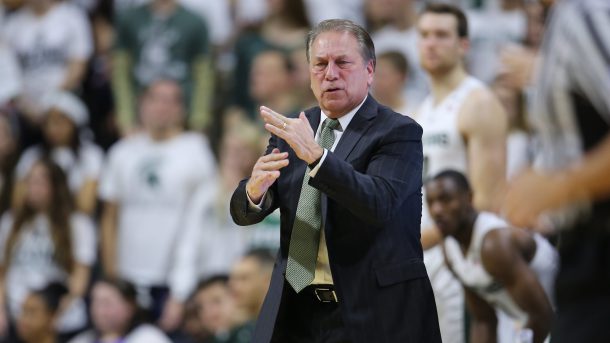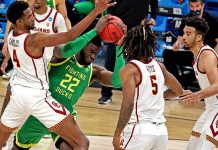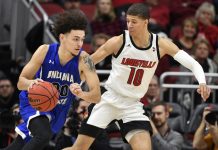LAS VEGAS (AP) The NCAA altered its timeout rules before the 2015-16 season, making it so coaches could no longer call one in live-ball situations.
The rule was designed to help speed up play and shift the emphasis of the game to the players.
This season, the NCAA has tweaked the rule, allowing coaches to call timeouts in live-ball situations, but only when the team is inbounding the ball.
Most coaches treat timeouts like gold medallions, so getting one back at a time when players are under their most duress is a decision that has gone over well.
”If there’s one we’re going to have one back, that’s the one to have because there are always situations that lend itself where you need to bail your guy out,” Fresno State coach Rodney Terry said.
The rule last year made it so coaches had to signal to the players and get them to call timeout in live-ball situations. Coaches were still allowed to call timeouts after made baskets and dead-ball situations.
The change was put in place essentially to prevent coaches from yelling ”Timeout!” whenever there was a scrum for a loose ball.
It turned out to be a big adjustment for coaches and players, particularly late in games, when players’ minds are racing.
Teams practiced late-game timeout situations, but the adrenaline of playing in a close game was not something that could be replicated.
”Obviously, when you’re in a game the young men have a thousand things going on in their mind and you’re on the bench, you can have that forethought and help them out,” Northern Arizona coach Jack Murphy said. ”I would never want a game coming to whether a kid called a timeout or not. I’d rather that be on use or least have the ability to do that.”
The tweak to the rule should help ease some of that.
Coaches will still have to flag their players down when the ball is live, which can be problematic with the crowd noise and the players so focused on what they’re doing.
But being able to call a timeout to prevent a 5-second in-bounds violation late in a game could make the difference between winning and losing.
”I like that because I think the kids are so caught up in trying to play and do the right things, I don’t know if they’re in tuned to do that,” New Mexico coach Craig Neal said. ”You can practice it all you want, but until you’re in that situation where they have to call it, it’s not comfortable for them because they’ve not done it.”
Where the rule might be a hindrance is to teams that like to press.
Part of what they want is to get opposing players out of their comfort zone, speed them up mentally and physically.
Allowing a coach to call a timeout before a 5-second call or bad decision is made might take some of that advantage away. The coach has the benefit of perspective standing on the sideline and can often see trouble developing when a player might not be able to in the heat of a game.
”I’m happy they did that. It’s nice to have that piece back,” Wyoming coach Allen Edwards said. ”But to me, that’s even more motivating. Even when I was a player, I always thought that when you did that and a coach had to call timeout, that was still a plus for you because they’re having to use one and the pressure is getting to them.”
25% Bonus via Western Union


















